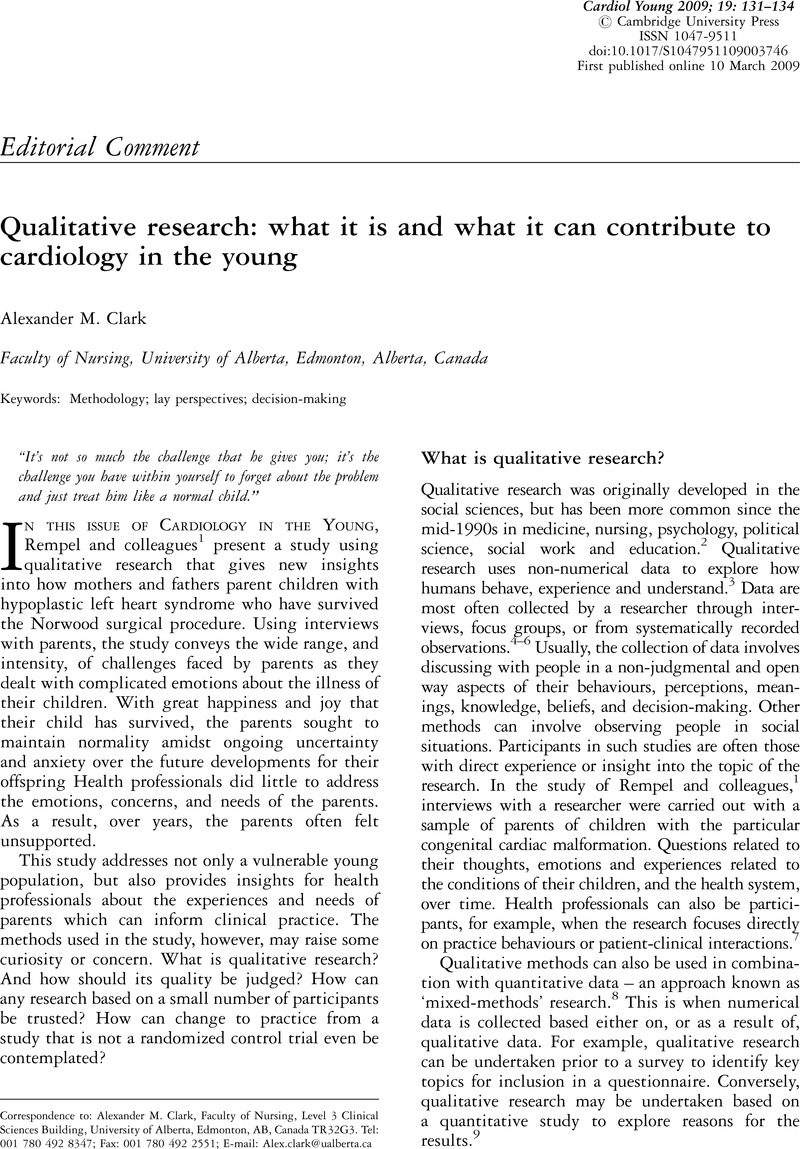Crossref Citations
This article has been cited by the following publications. This list is generated based on data provided by Crossref.
Baker, Edward
2009.
Communication with our patients, recognition of our peers.
Cardiology in the Young,
Vol. 19,
Issue. 2,
p.
117.
SERBER, EVA R.
and
ROSEN, ROCHELLE K.
2010.
Qualitative Research Provides Insight into Quantitative Quality of Life Measurement.
Pacing and Clinical Electrophysiology,
Vol. 33,
Issue. 3,
p.
253.
Bratt, Ewa-Lena
Östman-Smith, Ingegerd
Sparud-Lundin, Carina
and
Axelsson, B. Åsa
2011.
Parents’ experiences of having an asymptomatic child diagnosed with hypertrophic cardiomyopathy through family screening.
Cardiology in the Young,
Vol. 21,
Issue. 1,
p.
8.
Bratt, Ewa-Lena
Sparud-Lundin, Carina
Östman-Smith, Ingegerd
and
Axelsson, Åsa B.
2012.
The experience of being diagnosed with hypertrophic cardiomyopathy through family screening in childhood and adolescence.
Cardiology in the Young,
Vol. 22,
Issue. 5,
p.
528.
Re, Jennifer
Dean, Suzanne
and
Menahem, Samuel
2013.
Infant Cardiac Surgery: Mothers Tell Their Story.
World Journal for Pediatric and Congenital Heart Surgery,
Vol. 4,
Issue. 3,
p.
278.
Lotto, Robyn R.
Jones, Ian D.
Guerrero, Rafael
Dhannapuneni, Ram
and
Lotto, Attilio A.
2019.
Congenital cardiac surgery and parental perception of risk: a qualitative study.
Cardiology in the Young,
Vol. 29,
Issue. 11,
p.
1361.
du Plessis, Karin
Peters, Rebecca
Culnane, Evelyn
and
d’Udekem, Yves
2020.
Traversing the liminal: what can Fontan adults’ transition experiences and perspectives teach us about optimizing healthcare?.
International Journal of Adolescent Medicine and Health ,
Vol. 32,
Issue. 6,
Jose, Prinu
Ravindranath, Ranjana
Joseph, Linju M.
Rhodes, Elizabeth C.
Ganapathi, Sanjay
Harikrishnan, Sivadasanpillai
and
Jeemon, Panniyammakal
2020.
Patient, caregiver, and health care provider perspectives on barriers and facilitators to heart failure care in Kerala, India: A qualitative study.
Wellcome Open Research,
Vol. 5,
Issue. ,
p.
250.
Jose, Prinu
Ravindranath, Ranjana
Joseph, Linju M.
Rhodes, Elizabeth C.
Ganapathi, Sanjay
Harikrishnan, Sivadasanpillai
and
Jeemon, Panniyammakal
2021.
Patient, caregiver, and health care provider perspectives on barriers and facilitators to heart failure care in Kerala, India: A qualitative study.
Wellcome Open Research,
Vol. 5,
Issue. ,
p.
250.



